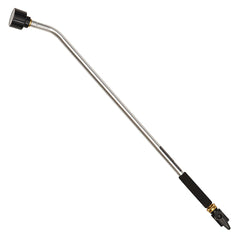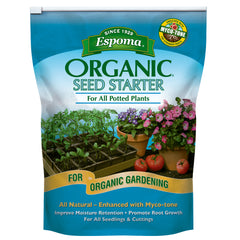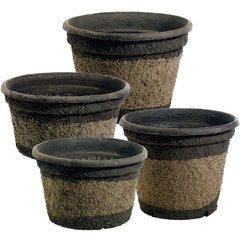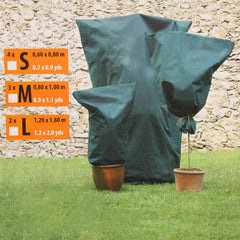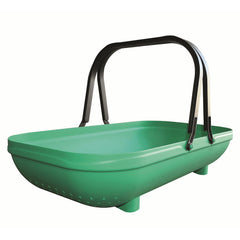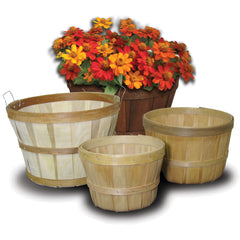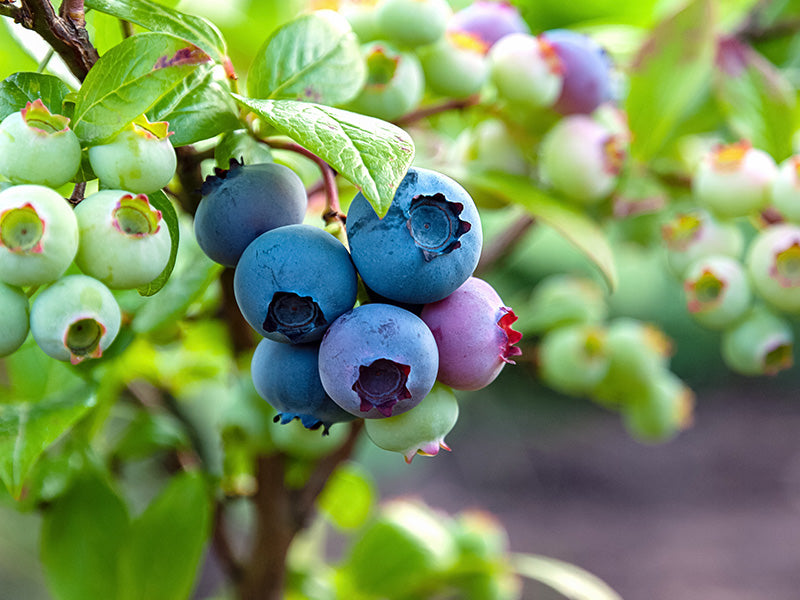
Shrub
Blueberry
USDA Zone: 3–8
Lifecycle: Perennial
Mature Size: 2–6 ft. tall
Native Region: North America
Sunlight Requirements: Full Sun
Learn about: Care, Seeding, Planting and Potting, Feeding, Winterizing, Harvesting and Pruning

USDA Zone: 3–8
Lifecycle: Perennial
Mature Size: 2–6 ft. tall
Native Region: North America
Sunlight Requirements: Full Sun
Learn about: Care, Seeding, Planting and Potting, Feeding, Winterizing, Harvesting and Pruning
Water blueberries deeply but infrequently, ensuring the soil stays moist but not waterlogged. They have shallow roots, so consistent watering—especially in hot weather—is crucial. Mulch around the base with 2–4 inches of organic material to help retain moisture and regulate soil temperature.
To encourage healthy growth and fruit production, prune young plants lightly for shape and remove weak or damaged branches. Once mature (after 3–4 years), prune annually in late winter to remove old, non-productive wood and encourage new growth.
Blueberries are relatively pest-resistant, but watch for common issues like aphids, spider mites, and fungal diseases. To prevent diseases such as powdery mildew and root rot, ensure good air circulation and avoid overhead watering.
Growing blueberries from seed is a slow but rewarding process. Start with fresh or store-bought blueberry seeds. To improve germination, place seeds in a damp paper towel inside a sealed plastic bag and refrigerate them for 6–8 weeks (cold stratification). After this period, sow seeds in a seed tray filled with acidic, well-draining soil (pH 4.5–5.5), covering them lightly with soil. Keep the tray in a warm, bright location (70–75°F or 21–24°C) and maintain consistent moisture. Germination can take 6–8 weeks. Once seedlings have a few sets of true leaves, transplant them into larger containers.
Blueberries thrive in acidic, well-drained soil with a pH of 4.5–5.5. If your soil is too alkaline, amend it with peat moss, pine needles, or sulfur before planting. For container-grown blueberries, use a pot at least 12–16 inches wide with drainage holes and a potting mix designed for acid-loving plants.
When planting in the ground, choose a sunny location with at least 6–8 hours of direct sunlight daily. Space plants 3–5 feet apart to allow for proper airflow and growth. Blueberries are best grown in clusters, so plant at least two different varieties nearby to improve pollination and yield.
Blueberries benefit from fertilizers formulated for acid-loving plants, such as those made for azaleas or rhododendrons. Use an organic or slow-release fertilizer in early spring and again in late spring. Avoid high-nitrogen fertilizers, as they can lead to excessive leaf growth with fewer berries. Mulching with pine bark or sawdust helps retain moisture, suppress weeds, and maintain soil acidity.
Most blueberry varieties are hardy, but in colder climates, protect roots by applying a thick layer of mulch (straw, pine needles, or wood chips) around the base. If temperatures drop below 20°F (-7°C), consider covering the plants with burlap or frost blankets. For container-grown blueberries, move pots to a sheltered location, such as a garage or greenhouse, to prevent root freeze.
Blueberries typically begin producing fruit after 2–3 years, with peak yields around 5–7 years. Harvest when berries turn deep blue and easily detach from the stem, usually in mid-to-late summer. Avoid picking unripe berries, as they do not ripen off the plant.
For best results, store freshly picked blueberries in the refrigerator for up to two weeks. They can also be frozen, dried, or used in preserves for long-term storage.
Regular pruning in late winter or early spring is crucial to maintain plant health. Remove old, unproductive branches and thin out crowded growth to improve sunlight penetration and airflow, which encourages larger and sweeter berries.




